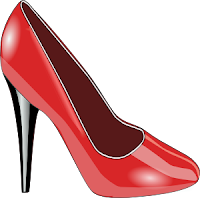Tunes for Tuesday -- A defector from Oriente and Her Contribution to Salsa Music
OK. We are almost to where all this background turns into Salsa. But, what does all of it have to do with Colombia? Well, for starters, Colombia has its own version of the Charanga. The original Cuban Charanga was played with timbales, güiro, conga, piano, volin, and flute. Colombians threw in . . . the accordion!
But this isn't today's topic either. We can't end our visit to Cuba without mentioning a few more details, relevant to the development of Salsa music. During the second half of the 19th Century, as Cuba became an independent island nation, the new country was divided along both geographic and socio-economic lines. Geographically, there were the provinces of Oriente (East) and Occidente (West). In Oriente, the main city was Santiago de Cuba, a place of intense economic activity which, years earlier, the Spanish Conquistadores had turned it into a main port for the trade of African Slaves. The natives of Santiago de Cuba, the Taino and Siboney Indians, would also "welcome" a wave of French immigrants. The resulting racial and cultural salad bowl that would arise would also engender its own spice, the new musical rhythms of Son, Bolero, and others.
The main cultural center in Occidente was La Habana (Havanna), a mandatory stop for Europeans traveling to Mexico and South America. After Cuban independence, the music of La Habana with its large Orchestras playing instruments and music reminiscent of France, became the music of the rich, white class. The music of Oriente would become the music of the poor and mostly black and mestizo people.
As we said last week, by the time of the Batista regime (1940s), several rhythms (Mambo, Charanga, Chachachá, Songo, Mozambique) had emerged mostly in the Cuban Oriente. Fidel Castro's rise to power in 1959 and the subsequent US embargo threatened to keep Cuban music on the Island. However, just prior to these historical events, a great change had taken place in the music, the Conga drum had been incorporated as a new instrument. The sound of the Conga, familiar to other musicians around the world, contributed to the rapid escape and spread of Cuban rhythms outside the Island. While Castro and the US embargo managed to reduce the influence of Cuba as a music center, they also pushed immigrant musicians to maintain and develop the Cuban rhythms, and to find them a new home. The sound that emerged would be called Salsa, and its home would be in three main places, New York, Miami, and Colombia.
Before talking then about the Pioneers of Salsa music, here's a Son by a wonderful Cuban artist with a Colombian connection. She muses: "Para bailar bien el son, hay que nacer en Oriente . . ." In order to dance the Son well, you have to be born in Oriente . . ." She's not really excluding anybody, this is just her homage to her homeland. The song comes from her second album Cantaré, released in 1992. She was already a well known figure in Cuba and had released another album in 1988 titled, Habrá Música Guajira (There Will Be Guajira Music). Her success had taken her to a show in Colombia in the early 1990s, where she decided to defect. Colombia would have kept her forever, but she decided to move to Miami in 1993. There, she was swallowed up by a black hole of a music label owned by Gloria Estefan, never to be heard of again.
OK, since we really haven't met Albita Rodriguez, here she is singing live one of her best known hits "La Parranda Se Canta":

Comments